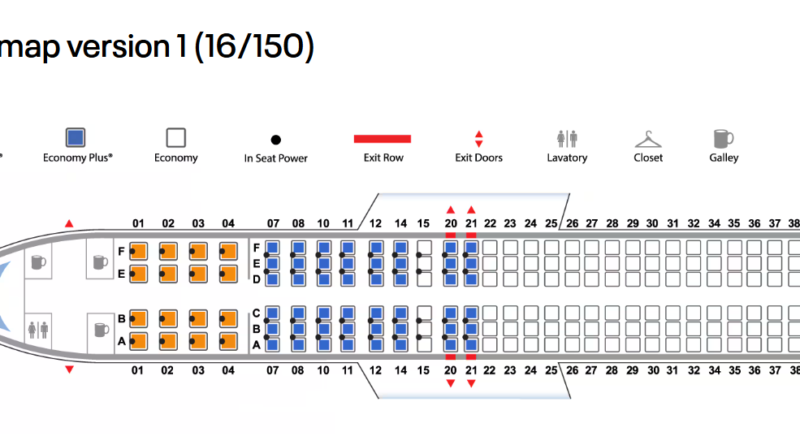The Curious Case Of Air India 171 Seat 11A: Reflections on Survival and Probability
In the vast tapestry of catastrophe, it is often the smallest thread—a name, a gesture, a number—that arrests our collective attention. So it was with the recent Air India tragedy, a disaster of immense proportions that claimed the lives of over 270 passengers. Yet amid the trauma and loss, a single anomaly stood out: seat 11A.
The passenger in 11A emerged—astonishingly—with only minor injuries. It is a fact that demands our reflection, not for the sake of spectacle, but because it reveals something about the human compulsion to find meaning in chaos. Almost immediately, social media platforms erupted with analysis. 11A became the “miracle seat,” its position mapped and discussed with nearly forensic intensity. Was it next to the emergency exit? Did the angle of impact somehow favor this small quadrant of the fuselage? Was it, as some suggested, the very spot where the aircraft split, creating a pocket of survivability? Or was it, more simply and profoundly, chance?
Aviation analysts have gently reminded the public: survival in such scenarios is often not governed by logic or location. It is stochastic, governed by a matrix of variables so complex and individualized that any definitive conclusion collapses under scrutiny. Still, the mind longs to assemble a narrative from randomness. And perhaps, like certain neurological syndromes I have written about—where patients confabulate memories to fill in gaps—the public, too, must construct stories where certainty fails.
Is 11A Most Disliked Seat?
Even as speculation around the so-called “miracle seat” gathered momentum online—many vowing, half-seriously, to book 11A on their next flight—an older narrative about this particular seat began to reemerge. It turns out that seat 11A, far from being a universal favorite, has long held a relatively unremarkable, and even unpopular, place in the annals of commercial aviation, especially among seasonedtravelers in Europe.
On certain Boeing 737 aircraft used by the budget airline Ryanair, 11A is—quite simply—a seat without a window. One sits beside a blank wall, a curious design decision that removes the usual visual orientation air travelers are accustomed to. For some, especially the anxious flier or the restless child, this can feel profoundly dislocating—being in the air, yet seeing nothing of it.
Furthermore, on smaller aircraft, row 11 often falls mid-cabin, far from the exits. A former American Airlines flight attendant once remarked, in a tone both practical and weary, that passengers seated in this zone—especially by the window—were usually the last to deplane. “If you’re hoping for a quick escape,” she said, “avoid row 11.”
Yet these criticisms do not apply universally. The Air India aircraft in question was a Boeing 787-8, a long-haul, wide-body aircraft with a different spatial configuration. On that flight, seat 11A was located in the very first row of economy class, directly behind the business section. It had a window, was close to the front, and—most critically—was situated adjacent to an emergency exit. In this context, what had once been dismissed as an undesirable seat took on a startling new meaning: it became the improbable locus of survival.
Is There Such a Thing as ‘ Safest Seat’ in Case of a Crash?
Stressing that it is important to note that air travel is one of the safest modes of transportation, Cheng-Lung Wu, an associate professor in the School of Aviation at the University of New South Wales in Australia, told Live Science, “ The fatality rate is way, way lower than driving a car.” However, Wu added that there have been no robust scientific studies investigating which seats on an airplane are the safest.
Federal Aviation Administration data analysed by Time Magazine in 2015 showed that the back third of a plane has the lowest fatality rate, but survival varies with the nature of the crash and where the aircraft absorbs the brunt of the impact. Passengers in aisle seats in the middle section of the cabin fared the worst, with a 44% fatality, per the Times’ study, which reviewed 35 years of FAA data.
Sitting in an Emergency Exit Row is a Responsibility
While emergency exit seats are coveted for the ample leg space, a passenger sitting in an exit-row seat has the incredibly important responsibility of operating the exit in case of an emergency. Flight attendants are required to brief exit-row passengers about how to do this properly. Typically located around the wing area or in rows just before the exits, fliers sitting here need to be physically fit so that they can assist the crew to open it in case of an emergency.
Flight Health & Safety Tips to Avoid Accidents
1. Wear Your Seatbelt at All Times
- Even when the seatbelt sign is off, turbulence can strike unexpectedly.
- Tip: Keep your seatbelt fastened loosely across your lap while seated.
2. Stow Luggage Properly
- Overhead bins can become dangerous if items fall during turbulence or landing.
- Tip: Place heavy bags under the seat in front of you, not in the overhead bin.
3. Avoid Walking During Turbulence
- Falls and injuries often happen when passengers move during air pockets.
- Tip: Always wait for the seatbelt sign to go off, and hold onto seat backs while walking.
4. Watch Your Step
- Tripping over bags or uneven flooring is common.
- Tip: Keep the area near your feet clear and avoid walking barefoot.
5. Follow Crew Instructions Carefully
- Flight attendants are trained for safety and emergencies.
- Tip: Always listen during the safety demonstration and follow directions during turbulence or emergencies.
6. Avoid Blocking the Aisle
- Standing in the aisle too long can lead to accidents or obstruct emergency movement.
- Tip: Limit time spent standing; return to your seat as soon as possible.
7. Secure Loose Items
- Unsecured objects can fly around during turbulence.
- Tip: Store gadgets, books, and bottles safely after use.
8. Be Emergency-Aware
- Know where the nearest exit is and how to operate your life vest or oxygen mask.
- Tip: Read the safety card even if you’re a frequent flyer—each aircraft may be different.
Get updates and read additional stories on the Health Orbit Fan Page.
For Guest posts, Sponsored posts and other details, please click ‘Contact Us’ page.




